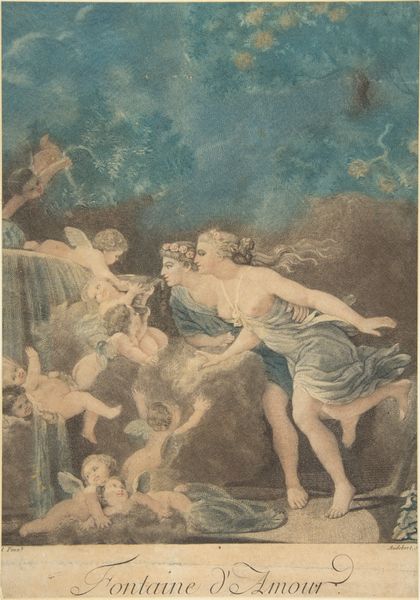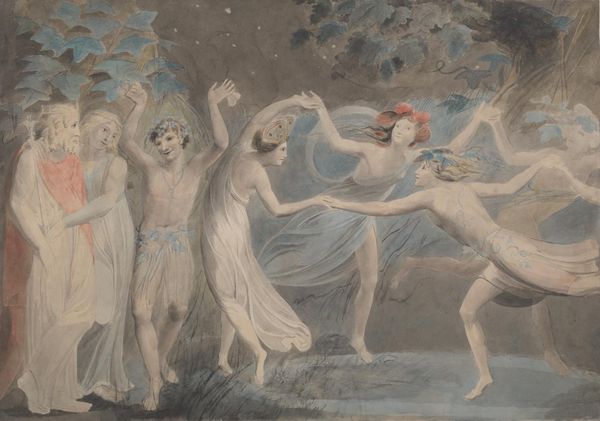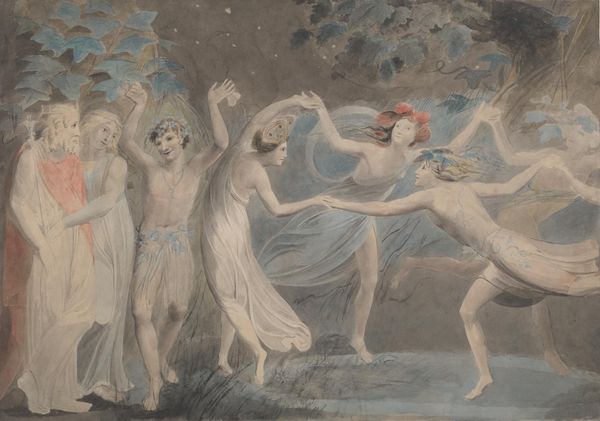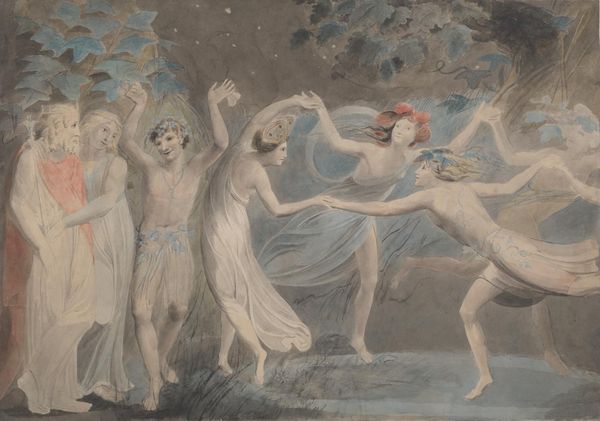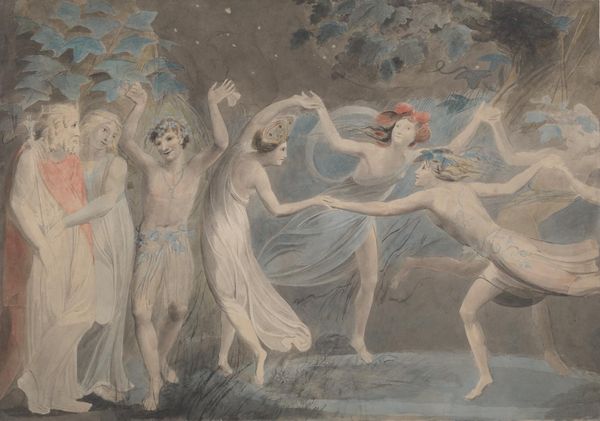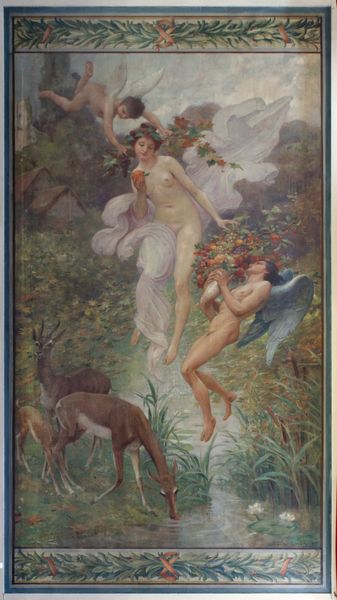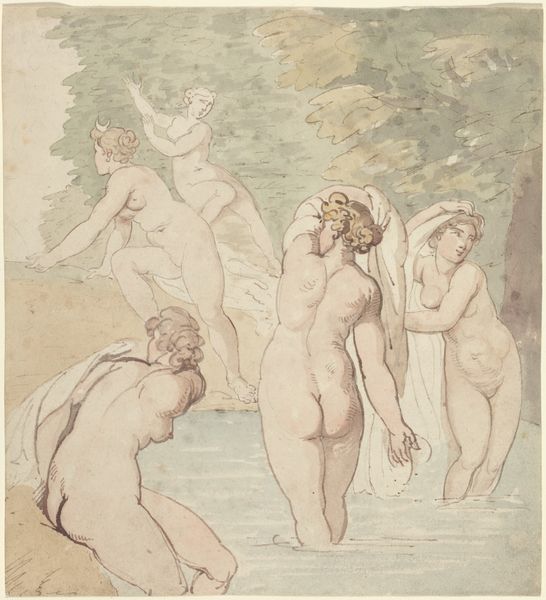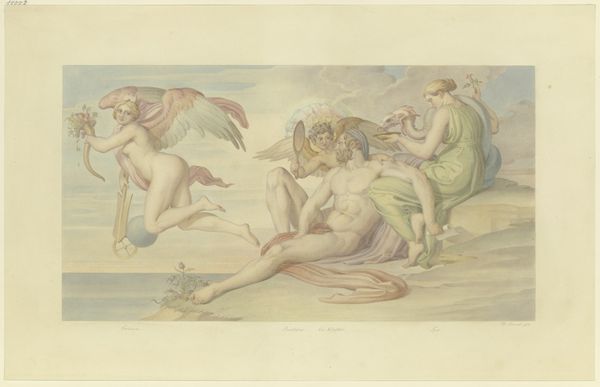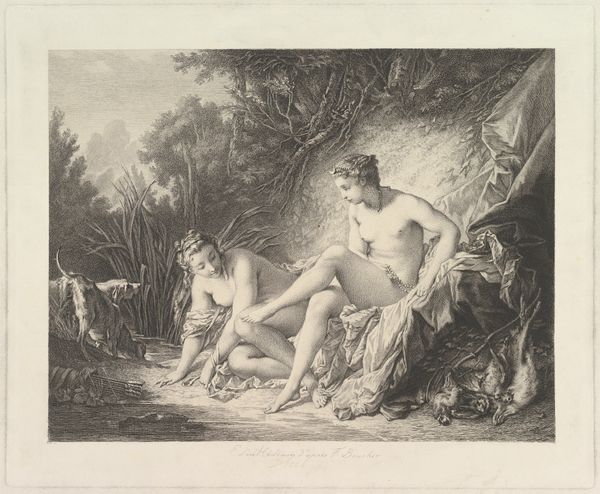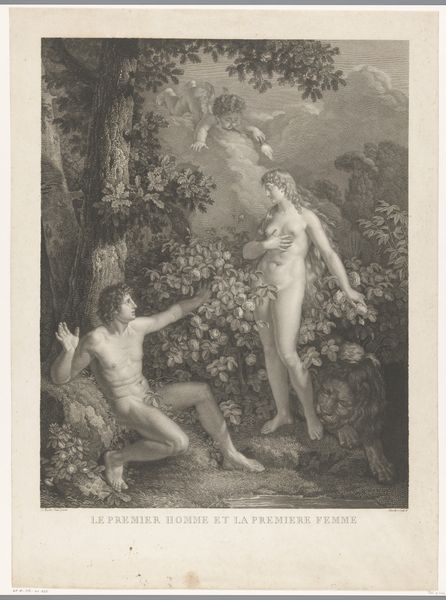
Copyright: Public Domain
Curator: This drawing by Arnout Rentinck, titled *Alpheus Chasing Arethusa Who Is Rescued by Diana*, dates from 1723 to 1742 and resides at the Städel Museum. Look at the composition! A chase unfolds within this landscape in watercolor, gouache and chalk. What do you see first? Editor: The cloud, absolutely! It’s luminous, a focal point of refuge. The figures seem to almost evaporate into its shape. There's a real sense of vulnerability there in that fleeting transition. Curator: Absolutely, vulnerability is a key aspect. Arethusa's story, as told in Ovid's *Metamorphoses*, embodies the pursuit and transformation narratives so popular then. It speaks to anxieties about autonomy and protection in 18th-century Netherlandish culture. Alpheus, the river god, is chasing her, but look closer. Do you think Diana’s intervention, visualized above, will be successful? Editor: Given the visual language here, I think it’s ambiguous. While Diana presides above, almost like a theater box spectator, Arethusa and Alpheus are visually intertwined. It brings to mind the power dynamics inherent in mythological narratives involving deities, where free will becomes subordinate to the grand narrative. The symbolism is less about tangible rescue and more about power. Curator: Precisely! The Baroque style, here rendered in delicate chalks and watercolors, allows Rentinck to play with contrasts – the hard stone, the soft flesh, the ephemeral cloud. Arethusa isn’t just fleeing; she is dissolving, her identity shifting. The flowing lines and pastel palette reinforce that change. Think about it from a period perspective: did the intended audience accept this narrative about autonomy as something progressive, or something to be afraid of? Editor: That tension is certainly present! We see in art history so often the male gaze placed front and center; and while Arethusa is escaping from Alpheus, this gaze and Diana’s is hard to ignore. Yet there are also currents challenging expectations. It speaks, even implicitly, about cultural unease surrounding shifts in social conventions, perhaps even gender roles. It becomes not merely an allegorical tableau but a complex commentary on societal transformations. Curator: Such pieces allowed safe discussion of dangerous ideas. What seems a playful mythological scene served as an arena for considering human agency against divine or social constraints. It shows how carefully encoded a picture of freedom can be, especially when etched in chalk and water. Editor: Ultimately, seeing these narratives unfold helps understand how a story and artwork can symbolize so much about not only personal struggles, but cultural changes as well. Thanks for highlighting this piece today.
Comments
No comments
Be the first to comment and join the conversation on the ultimate creative platform.
